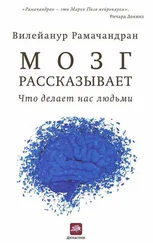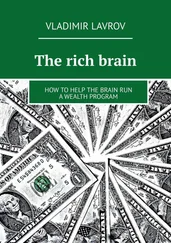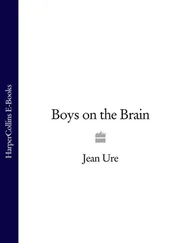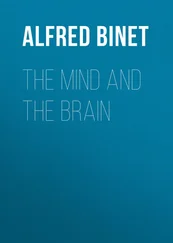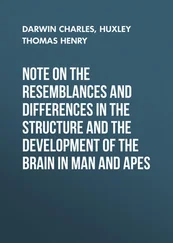Gazzaniga, M. 1992. Nature’s Mind . New York: Basic Books.
Gazzaniga, M., J.E. Bogen, and R.W. Sperry. 1962. “Some Functional Effects of Sectioning the Cerebral Commisures in Man.” Proc Natl Acad of Sci USA , U8: 1765–1769.
Gibbs, F.A. 1951. “Ictal and Non-Ictal Psychiatric Disorders in Temporal Lobe Epilepsy.” J Nerv Ment Dis , 133:522–528.
Girgis, M. 1971. “The Orbital Surface of the Frontal Lobe of the Brain.” Acta Psychiatry Scand , 222:1–58.
Gleick, J.L. 1987. Chaos . New York: Penguin.
Gloor, P. 1992. “Amygdala and Temporal Lobe Epilepsy.” In J.P. Aggleton (ed.), The Amygdala: Neurobiological Aspects of Emotion, Memory, Mental Dysfunction . New York: Wiley-Liss.
Golberg, G. 1987. “From Intent to Action.” In E. Perecman (ed.), The Frontal Lobes Revised . Hillsdale, NJ: Lawrence Erlbaum.
Goldberg, E., and R.M. Bilder, Jr. 1987. “The Frontal Lobes and Hierarchical Organization of Cognitive Control.” In E. Perecman (ed.), The Frontal Lobes Revisited . Hillsdale, NJ: Lawrence Erlbaum.
Goldman-Rakic, P.S. 1987. “Circuitry of Primate Prefrontal Cortex and Regulation of Behavior by Representational Memory.” Handbook of Physiology: The Nervous System , vol. 5., Bethesda, MD: American Psychological Society, 373–417.
Goldman-Rakic, P.S. 1988. “Topography of Cognition: Parallel Distributed Networks in Primate Association Cortex.” Annu Rev Neurosci , 11:137–156.
Gould, S.J. 1981. The Mismeasure of Man . New York: W.W. Norton.
Gould, S.J. 1983. Panda’s Thumb . New York: Penguin.
Gould, S.J. 1989. Wonderful Life . New York: W.W. Norton.
Gray, C.M., A.K. Engel, P. Konig, and W. Singer. 1992. “Synchronization of Oscillatory Neural Responses in Cat Striate Cortex: Temporal Properties.” Vis Neurosci , 8(4):337–347.
Gray, C.M., and W. Singer. 1989. “Stimulus Specific Neural Oscillations.” Proc Natl Acad Sci USA , 86:1689–1702.
Graziano, M.S.A., G.S. Yap, and C. Gross. 1994. “Coding of Visual Space by Premotor Neurons.” Science , 266:1051–1054.
Gregory, R.L. 1966. Eye and Brain . London: Wiedenfeld and Nicolson.
Gregory, R.L. 1981. Mind in Science . Cambridge: Cambridge University Press.
Gregory, R.L. 1997. Mirrors in Mind . New York: Oxford University Press.
Gregory, R.L. 1991. Odd Perceptions . New York: Routledge, Chapman Hall.
Gross, C.G. 1992. “Representatives of Visual Stimuli in the Inferior Temporal Cortex.” Pro Roy Soc London [Biol], 135:3–10.
Halligan, P.W., and J.C. Marshall, eds. 1994. Spatial Neglect . Hillsdale, NJ: Lawrence Erlbaum.
Halligan, P.W., J.C. Marshall, and V. S. Ramachandran. “Ghosts in the Machine: A Case Description of Visual and Haptic Hallucinations after Right Hemisphere Stroke.” Cog Neuropsychol , 11:459–477.
Halligan, P.W., J.C. Marshall, D.T. Wade, J. Davey, and D. Morrison. 1993. “Thumb in Cheek? Sensory Reorganization and Perceptual Plasticity after Limb Amputation.” Neuroreport , 4:233–236.
Hameroff, S., and R. Penrose. 1995. “Orchestrated Reduction of Quantum Coherence in Brain Molecules: A Model for Consciousness.” In J. King and K.H. Pribram (eds.), Conscious Experience: Is the Brain Too Important to Be Left to Specialists to Study? Hillsdale, NJ: Lawrence Erlbaum, 241–274.
Hamilton, W.D. 1964. “The Genetical Evolution of Social Behavior.” J Theor Biol , 7:1–52.
Hamilton, W.D., and M. Zuk. 1982. “Heritable True Fitness and Bright Birds: A Role for Parasites?” Science , 218:384–387.
Harrington, A. 1989. Medicine, Mind, and the Double Brain . Princeton, NJ: Princeton University Press.
Head, H. 1918. “Sensation and the Cerebral Cortex.” Brain , 41:57–253.
Heilman, J. 1991. In G. Prigatano and D. Schacter (eds.), Awareness of Deficits after Brain Injury . New York: Oxford University Press.
Hermelin, B., and N. O’Connor. 1990. “Factors and Primes: A Specific Numerical Ability.” Psychol Med , 20:163–189.
Hill, A.L. 1978. In N.R. Eller (ed.), Mentally Retarded Individuals with Special Skills , Vol. 9. New York: Academic Press.
Hirstein, W., and V.S. Ramachandran. 1997. “Capgras’ Syndrome: A Novel Probe for Understanding the Neural Representation of Identity and Familiarity of Persons.” Proc R Soc London [Biol], 264:437–444.
Hobson, J.A. 1988. The Dreaming Brain . New York: Basic Books.
Hochberg, J.E. 1964. Perception . Englewood Cliffs, NJ: Prentice-Hall.
Hoffman, J. 1955. “Facial Phantom Phenomena.” J Nerv Ment Dis , 122:143.
Horgan, J. 1994. “Can Science Explain Consciusness?” Sci Am , 271:88–94.
Hubei, D.H., and T.N. Wiesel. 1979. “Brain Mechanisms of Vision.” Sci Am , 241: 150–162.
Hubei, D.H., and M.S. Livingstone. 1985. “Complex Unoriented Cells in a Subregion of Primate Area 18.” Nature , 315:325–327.
Humphrey, N. 1992. A History of the Mind . New York: Simon & Schuster.
Humphrey, N. 1993. History of the Mind: Evolution and the Birth of Consciousness . New York: HarperCollins.
Ironside, R. 1955. “Disorder of Laughter Due to Brain Lesions.” Presidential Address, Neurological Section, Royal Society of Medicine, London.
Jackendorf, R. 1987. Conciousness and the Computational Mind . Cambridge, MA: MIT Press.
Jacobs, B. 1994. “Serotonin, Motor Activity and Depression-Related Disorders.” American Scientist , 82:456–463.
James, W. 1887. “The Consciousness of Lost Limbs.” Proc Am Soc Psychic Res , 1: 249–258.
James, W. 1890. The Principles of Psychology . New York: Henry Holt, 288–289.
Johanson, D., and B. Edward. 1996. From Lucy to Language . New York: Simon & Schuster.
Johnson, G. 1995. Fire in the Mind . New York: Random House.
Jones, E. 1982. “Thalamic Basis of Place- and Modality-Specific Columns in Monkey Somatosensory Cortex: A Correlative Anatomical and Physiological Study.” J Neurophysiol , 48:546–568.
Joseph, R. 1990. Neuropsychology, Neuropsychiatry, and Behavioral Neurology . New York: Plenum Press.
Joseph, R. 1992. The Right Brain in the Unconscious . New York: Plenum Press.
Joseph, R. 1993. The Naked Neuron . New York: Plenum Press.
Juba, A. 1949. “Beitrag zur Strukdur der ein und doppelsietgen Korshemastorungen.” Monatsschr Psychiatr Neurol , 118:11–29.
Kaas, J.H., R.J. Nelson, M. Sur, and M.M. Merzenich. 1981. The Organization of the Cerebral Cortex . Cambridge, MA: MIT Press, 237–261.
Kaas, J.H., and S.L. Florence. 1996. “Brain Reorganization and Experience.” Peabody J Educ , 71:152–167.
Kallio, K.E. 1950. “Phantom Limb of Forearm Stump Cleft by Kineplastic Surgery.” Acta Chir Scand , 99:121–132.
Kandel, E.R., J.H. Schwartz, and T.M. Jessell. 1991. Principles of Neural Science . New York: Elsevier.
Kaufmann, S. 1993. The Origins of Order . New York: Oxford University Press.
Kaufmann, S. 1995. At Home in the Universe . New York: Oxford University Press.
Kew, J.J.M., P.W. Halligan, J.C. Marshall, R.E. Passingham, J.C. Rothwell, M.C. Ridding, et al. 1997. “Abnormal Access of Axial Vibrotactile Input to Deafferented Somatosensory Cortex in Human Upper Limb Amputees.” J Neurophysiol , 77:2753–2764.
Kinney, H. 1995. James Thurber, His Life and Times . New York: Henry Holt.
Читать дальше


